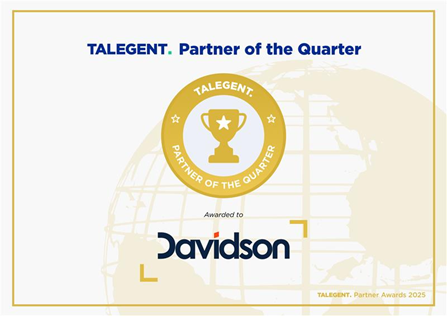Carbon and the cloud: The hard facts about data storage
As we enter a critical decade for climate change, the environment is becoming a major focus for corporate governance.

But the more savvy and transparent businesses are in the way they address their carbon footprint, the more pressure they are placing on major cloud providers to accelerate the road to zero carbon.
Davidson’s cloud and data practice director Russell Haynes said cloud providers were aware of the pressure, with the top three providers already setting goals to deploy renewable energy and reach net zero emissions.
Mr Haynes said Google’s cloud-computing arm, Google Cloud, is leading the pack having been carbon-neutral since 2007.
It has also matched 100 per cent of its electricity consumption with renewable energy since 2017 and maintains it operates the “cleanest cloud”.
“Google is now working towards 24/7 clean power for its data centres by 2030. Amazon is shooting for 100 per cent renewables by 2025. And Microsoft is leading the way on transparency for its cloud customers,” Mr Haynes said.
But these targets are just the beginning. Corporate demand to meet aggressive carbon reduction goals will set off the next big cloud race – the race to zero carbon.
Heads in the cloud
Cloud computing and data centres have become core global infrastructure – the roads and bridges of the internet economy. But they’ve also become a significant driver of carbon emissions.
The bottom line is that storing data on the cloud uses far more energy than storing it on a computer, and therefore has an environmental impact equal with that difference.
Mr Haynes said, simply put, the emissions of cloud providers were the emissions of the businesses that used them.
“Businesses can take several proactive steps to address these concerns. From the simple step of switching to data centres on lower carbon electricity grids to the more complex task of transitioning major parts of their business to a cleaner cloud service,” he said.
Davidson delivery partner Joe Gardiner said to be sure, cloud services were almost certainly more energy efficient than privately operated data centres.
“So companies that have moved from on-premise or self-operated data centres to any of the major cloud providers have already reduced their carbon footprint,” he said.
Mr Gardiner said the advancements in virtualisation and multi-tenancy sharing in modern cloud solutions levelled out slack in the system.
“Networks on the whole are much more efficient in allocating and consuming resources,” he said.
“A good example is the move to serverless. We are seeing multiple customers embracing serverless approaches to cloud computing.
“This is like the Snapchat of servers – where the server is ephemeral – and operates for a set function before closing. This reduces waste with far fewer energy hungry servers and supporting infrastructure online.”
Mr Gardiner said tech emissions would increase further as the global economy continued to digitise and advanced AI and machine learning demanded more computational power.
“Cloud service providers are moving strongly to adopt energy supply from renewable or low carbon sources. Amazon particularly is making strides in this area with its energy partnership with Shell,” he said.
How to reduce footprint
The scale of cloud carbon emissions has long gone underreported. Until a few years ago, very few cloud customers had the means of measuring, understanding or managing their true contributions.
Mr Haynes said businesses should think about emissions in two categories – the “direct” emissions from the electricity necessary to operate a data centre, and the “indirect” emissions from manufacturing hardware and other operations to deliver cloud services.
“Businesses should start by understanding the impact of emissions from their cloud provider in both categories. And cloud providers should make it easier by being transparent about their electricity grids and upstream emissions,” he said.
Mr Gardiner said as the big cloud service providers were working toward their carbon-free and net zero carbon emissions goals, they were also helping their customers understand their own cloud-related carbon footprints.
The big three cloud service providers have tools that, in varying degrees, measure estimated carbon emissions tied to individual customers’ cloud infrastructure and services usage and help them work more sustainably.
“Businesses can use those tools to make and track progress toward their carbon-reduction targets and meet environmental, social and corporate governance reporting requirements,” Mr Gardiner said.
For example, Google Cloud’s Carbon Footprint allows customers to measure, report and reduce their carbon emissions by providing the gross carbon emissions associated with the electricity from their Google Cloud Platform usage.
“Customers can monitor their cloud emissions by product, project and region,” Mr Gardiner said.
The three “Ps”
Business leaders are increasingly realising the power of sustainable business strategies in not only addressing the world’s most pressing challenges but driving their business’s success.
However, defining what sustainability means, solidifying clear and attainable goals, and formulating a strategy to achieve those goals can be daunting.
One common way to understand a business’s sustainability efforts is using a concept known as the triple bottom line.
Mr Haynes said the triple bottom line could be broken down into the “three Ps”: profit, people, and the planet.
Increasingly, businesses are looking at more than one bottom line.
Mr Haynes said this was with good reason.
“Running a sustainable business is not just good for the planet, it can be correlated with the prosperity of the business,” he said.
“Reduced business costs, more innovative strategies, an improved reputation, and a greater number of new customers are just some of the benefits businesses see when they make the decision to look at the triple bottom line.
“To some, adopting a triple bottom line approach may seem idealistic in a world that emphasises profit over purpose, but innovative businesses have shown time and again that it’s possible to do well by doing good.
Share this content





